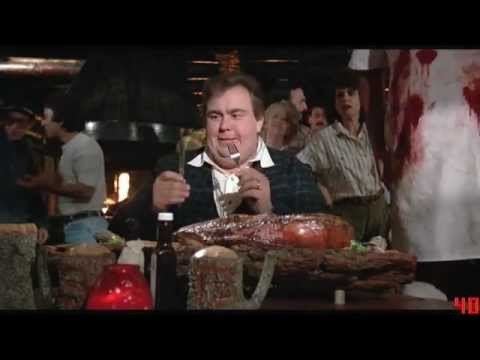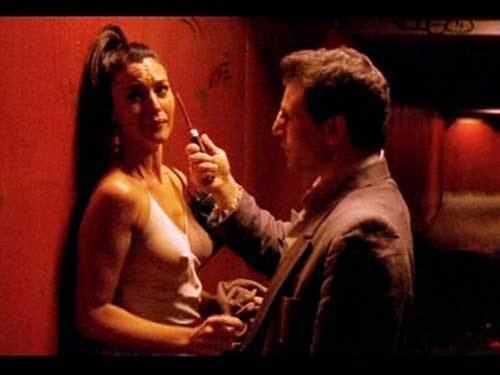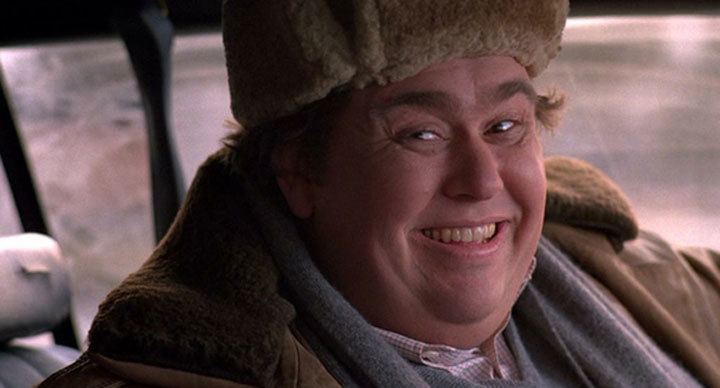Candy Candy
8 /10 1 Votes
Director Tetsuo Imazawa | Duration | |||||||||||||||||||||||||||||||||
 | ||||||||||||||||||||||||||||||||||
Release date 25 April 1992 | ||||||||||||||||||||||||||||||||||
candy candy kyary pamyu pamyu candy candy
Candy Candy (キャンディ・キャンディ, Kyandi Kyandi) is a Japanese historical Romance novel, manga, and a classic anime series. The main character, Candice "Candy" White Audley is a blonde girl with freckles, large emerald green eyes and long, curly hair, worn in pigtails with bows. Candy Candy first appeared in a prose novel by famed Japanese writer Keiko Nagita under the pen name Kyoko Mizuki in April 1975. When Mizuki joined forces with manga artist Yumiko Igarashi, the Japanese magazine Nakayoshi became interested in Candy Candy. The series was serialized as a manga series in the magazine for four years and won the 1st Kodansha Manga Award for shōjo in 1977. The story was adapted into an anime series by Toei Animation. There are also four animated short films.
Contents
- candy candy kyary pamyu pamyu candy candy
- Candy candy capitulo 1
- Plot
- Novel
- Manga
- Volumes
- Anime
- Cast
- Film
- TV series
- Releases
- Legacy
- References

Candy candy capitulo 1
Plot

The Candy Candy manga provides a "coming of age story" in the shōjo genre. Candy, an abandoned orphan taken in by the orphanage Pony's Home near Lake Michigan around the start of the 20th century,.spent the first years of her life at the orphanage, to where she would often return to repose and to decide her next course in life. When Annie, her best friend at the orphanage, was adopted, she ran outside crying, and met briefly a young man in kilt who told her not to cry. Candy retained fond memories of the young man and, not knowing his name, remembered him as her "Prince on the Hill". The young man will have great influence and importance in her life later on.

When she turned thirteen, Candy was taken in by the Lagan family as a companion for their Lagan family daughter, Eliza. The Lagans treated her poorly and eventually made Candy a servant girl. When the Lagan family accused Candy of stealing and sent her off to work in their family farm in Mexico, Candy was rescued from being sent to Mexico by William Audrey, the sole heir of the very wealthy Audrey family and the owner of the Audrey estate. William Audrey became Candy's adoptive father, but his true identity remained a mystery and she would not meet him until the end of the story. He was also the uncle of Candy's first love, Anthony Brown, and a relative of Anthony's cousins, the Cornwell brothers Archibald (Archie) and Alistair (Stear), as well as the Lagan children.

Later on, Anthony died in a hunting accident when he was thrown off the horseback. Thereafter, Candy, along with Archie and Stear, and the Lagan children, were sent to London to attend the prestigious St. Paul's College, a secondary school, where she met the rebellious bad boy Terry Grandchester the illegitimate child of a British Duke, although she once saw him crying on the same boat she was taking to travel to London. Terry was her second and grand love (in the words of the author Keiko Nagita/Kyoko Mizuki in the essays found on Misaki's website, "the great love that cannot bear fruit".). Circumstances divided the pair when Eliza Lagan schemed to have Candy expelled from St. Paul's by manipulating them into a scandal.

After the scandal, Terry left St. Paul's to protect Candy's reputation, but Candy also decided to leave. They would both embark on their individual life journeys forward in the United States, where Candy trained to become a nurse in Chicago around the time of World War I, and Terry pursued a career as a rising star actor on Broadway in New York. An actress in his theater troupe, Susanna, became attracted to Terry and believed she loved him. During a rehearsal session, an accident occurred and Susanna saved Terry's life, but in the process became disabled. Her injury destroyed her acting career. Her mother demanded that Terry takes care of her for the rest of her life. Susanna herself became depressed and attempted suicide, knowing that Terry loved Candy and did not love her. Feeling responsible, Terry was torn between reuniting with Candy and his duty to care for Susanna. When Candy discovered what happened, she decided to sacrifice her own happiness and left Terry, so Terry could remain with Susanna, even though Terry did not love Susanna and was deeply in love with Candy.
Afterwards, Candy returned to Chicago to continue her life. By chance, she became the nurse and caretaker to her adoptive father, William Audrey, who lost his memories after a World War I related bomb explosion on a train in Italy. William ultimately regained his memories and revealed his true identity to Candy. At the end of the story, Candy discovered that he was her childhood Prince of the Hill. In Italy, however, the anime's ending was changed, and Candy and Terry meet again at a train station deciding to stay together.
In 2010 the novel "Candy Candy The Final Story" written by Mizuki using her real name Keiko Nagita,. Candy discovers that Susanna has died and Terence writes her a letter to say that for him nothing has changed, leaving hope that they will reunite.
There were some plot and character differences between the manga and the anime.: Candy's age was different for several events when she grew up at Pony's Home. In the manga, she was six or seven years old when she met her Prince of the Hill, but was ten in the anime. Her sidekick pet raccoon Kurin/Clint belonged solely to the anime version.
Novel
Kyoko Mizuki's (the pen name of Keiko Nagita) Candy Candy novel, consisting of three volumes, has piqued the interest of Candy Candy fans outside Japan for some years. This novel was only available in Japan and published in Japanese. Of particular interest is the 3rd volume, which covers the period after the events chronicled in the manga and anime. The novels have been translated in their entirety by Western
fans but the translations confirmed that, true to her artistic form, Kyoko Mizuki did not provide concrete closure to the story. Yet, in the last letter that closed out the novel, Candy was still an optimistic, life-loving and cheerful heroine. In 2010, Kyoko Mizuki, under her real name Keiko Nagita, revised and published the "Candy Candy Final Story" (CCFS). CCFS was published in two volumes and not three volumes as the earlier novels. She announced that this was her effort to tell the story as she always intended from the beginning, without the influence of the manga illustrator or the manga production team. Most of the plot of the story remained the same. Changes were made mainly to details of descriptions to scenes.She also replaced the children hiragana form writing of the earlier novels with more mature kanji form of the writing, and made the style of CCFS more poetic. She did, however, add a few major new developments to CCFS. In CCFS, Susanna had died from illness eight years after Candy and Terry separated. Terry wrote a letter to Candy to reach out to her. It is not said in CCFS whether Candy responded to his letter, but Nagita left open the door for their reunion. She also added a final scene where Candy, in her thirties and living in England, greeted her husband
when he came home. The identity of her husband
was not revealed, but Nagita said that she was satisfied with knowing that Candy now lived a happy life with the man she love [she loves].
In 2015, the Italian publisher Kappalab obtained the copyright to publish CCFS in its entirety in Italian. The first volume was published in early 2015. The second volume was released in summer 2015.
Manga
Announcement of a new series appeared in the March 1975 issue of Nakayoshi. The first chapter was published in April 1975, and continued until the last chapter in March 1979. However, the story did not appear in the November 1975, December 1976, January 1978 and June 1978 issues. The manga was published in 9 volumes.
Volumes
Anime
After the manga had become popular among Japanese girls, an anime series was produced for NET (now known as TV Asahi) in 1976. The anime has 115 episodes which run for 25 minutes each. Although Candy Candy was an anime, it contained soap opera elements, and it had a continuous story (like many anime series), so every chapter began where the last chapter had left off.
There are four animated short films: Candy Candy (1977), Candy Candy: The Call of Spring/The May Festival (1978), Candy Candy's Summer Vacation (1978) and Candy Candy the Movie (1992).
Cast
Film
In 1981 the Drama/Family live action movie of the manga & anime has been produced by Chu-ji Choi, directed by In-hyeon Choi, and written by Man Izawa. Shin-hie Choi is starring, alongside Do-hie Kim, Hyo-jeong Eom, Bo-geun Song and Eun-suk Yu. Due to licensing issue, the movie only made it on domestic release.
TV series
Sinemart as one of largest Indonesia production house made modern storytelling of Candy Candy with titled Candy drama series produced by Leo Sutanto & directed by Widi Wijaya airred on channel RCTI in 2007 starring Rachel Amanda, Nimaz Dewantary, Lucky Perdana & Bobby Joseph.
Releases
Between 1998 and 2001, three lawsuits arose between Kyoko Mizuki, Yumiko Igarashi and Toei Animation over the ownership of the Candy Candy copyrights.. During the 2000s, Candy Candy episodes began to be sold on bootleg DVD format, as the legal lawsuits between the authors halted any production of licensed goods. In 2005 and 2006, illegal/unlicensed Candy box sets began to appear. The first being from France, included the French and Japanese dialogue. Two Korean box sets are now in print, they include the Japanese and Korean dialogue, and Korean subtitles. 20 discs altogether were divided evenly into two box sets and available from HanBooks and Sensasian. Prior to the release, illegal/unlicensed Spanish DVD sets with poor audio and video were widely available on eBay. The illegal/unlicensed DVD set is issued in both Mandarin and Japanese with Chinese, English and Korean subtitles. On January 8, 2007, Chile A newspaper Las Últimas Noticias began issuing illegal/unlicensed DVDs of Candy Candy with its issues every Monday, with plans to continue to do so until all 115 episodes were released. In 2008, an illegal/unlicensed 115-episode DVD set was released in Taiwan..
